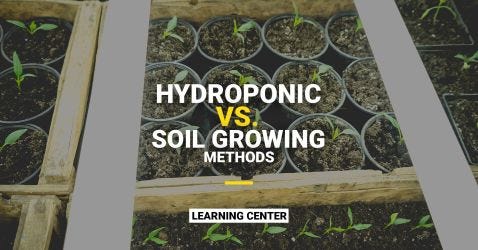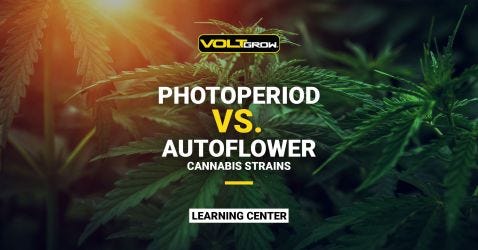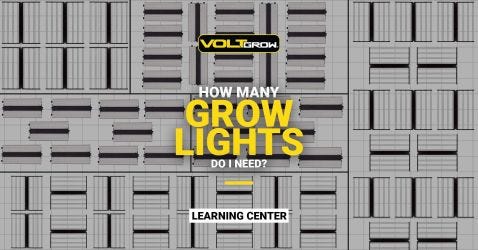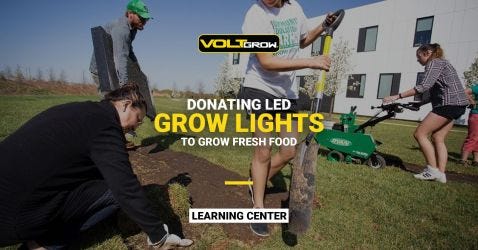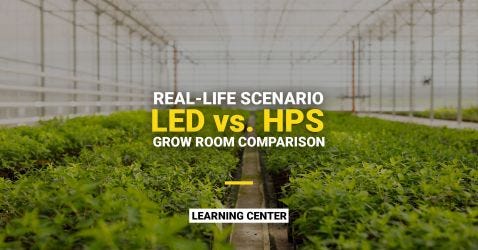When you are starting your first grow, there are many different factors to consider when looking to buy a grow light. You have to think about the type of light, what crop you are growing and how much light output is needed, the spectrum of light, how big your operation will be, and more. Between VOLT Grow®’s VL-1 and FL-1 high-output and dimmable grow lights, all of your lighting needs can be covered regardless of what type of growing you are doing.
Types of Lights
The main three types of lights are LED, HID (HPS/MH), and Fluorescent. Each type of grow light has its pros and cons, but when all is said and done, we believe LEDs are the best overall investment for producing high-quality crops for the best cost. As shown below, LEDs typically have a higher initial cost upfront, but with VOLT Grow®’s direct-to-consumer model, we offer top-quality LEDs for nearly half the cost of competing LED and HID lights. So with VOLT Grow®’s LEDs, you save on the upfront purchase, in addition to saving on the long-term operating costs.
|
LED |
HID (HPS/MH) |
CFL Compact Fluorescent Lamp |
|
|
|
Desired Light Output (PPF) Needed Depending on Type of Crop
Every plant varies in how much light output it needs to grow. For example, extremely light-hungry plants requires a much higher light intensity than a vegetable, such as a tomato. It is important to keep this in mind when choosing how powerful of a light you choose to get. VOLT Grow®’s VL-1 is targeted towards less light hungry crops or smaller grows, with a maximum PPF of 1220 µmol/s, while our FL-1 has some of the highest light output on the market with a maximum PPF of 2000 µmol/s. Both of our lights are dimmable, allowing them to be used for a variety of plants through all stages of growing cycles. See the recommended PPFs below depending on the type of crop you are planning to grow.
| TYPE OF PLANT | RECOMMENDED PPFD |
| Low-Medium Light Plants | 100-250 |
| High Light Plants | 250-450 |
| Leafy Greens | 200 |
| Fruiting Vegetables | 400-500 |
| Fruiting Trees | 600+ |
| Vegetative Stage | 300-600 |
| Flowering Stage | 900-1000+ |
Light Spectrum
While getting the necessary light output is very important for your plants, the spectrum of light they receive is also important. Outdoor plants evolved to grow under natural sunlight, which produces every color on the spectrum. Therefore, you want a full-spectrum grow light to best mimic natural sunlight and optimize plant growth.
Within the full spectrum, each wavelength (color) is responsible for a different effect on the plant’s growth. Blue and red light are the most prominent colors since blue drives stockiness in a plant during its vegetative stage, while red light helps plants stretch and bloom in the flowering stage. However, plants also utilize other colors, such as green light for driving photosynthesis and are more effective at penetrating the plant canopy. This is why it is optimal to get a full-spectrum light that uses a combination of all colors for well-rounded growth.
Wattage
It is important to not solely look at wattage when comparing light outputs of different grow light fixtures. Wattage only specifies how much power the light uses, but not how much light output it actually produces for the plants. Efficacy is more important to consider, which is defined as a grow light’s ability to convert power (watts) into light that can be used by crops. Efficacies vary depending on the type of light, which means fixtures with the exact same wattage could have very different light outputs. For example, since LEDs are much more efficient, VOLT GROW® 720W LED Grow Light has a higher light output than a 1000W DE HPS light. There is even variation among LED lights as some use more efficient diodes and drivers leading to greater light output, despite using the same amount of electricity. When looking at grow lights, you want to look for ones with high efficacies, so you can get the highest light output for each watt of electricity being used. VOLT Grow®’s FL-1 and VL-1 fixtures have a very high efficacy of 2.8.



